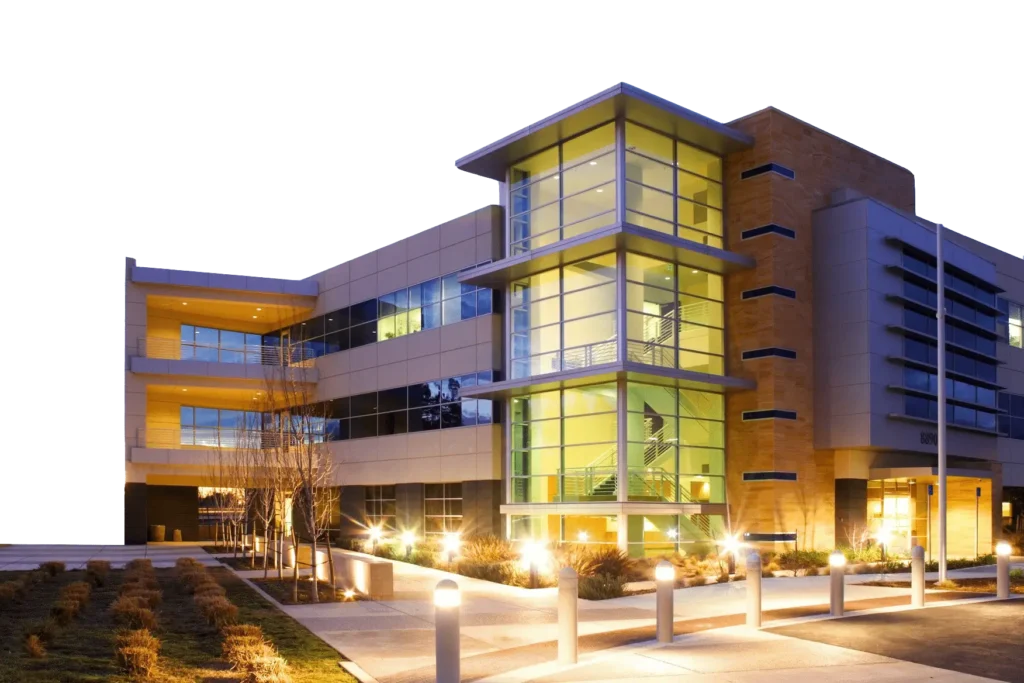Exploring the Charm of Semi-Transparent Building Fronts: Architectural Daylighting Meets Design PossibilitiesThe Architecture Designs

Semi-transparent facades are changing the game for architects and designers in how they approach building exteriors. Often surrounded by mystery these modern systems offer a blend of beauty and practicality reshaping the very appearance of a building. This piece aims to clarify this idea showcasing the benefits that semi-transparent facades bring to the forefront for both professionals and occupants.
Beyond Looks: The Magic of Semi-Transparent Facades
source: pngnice
Gone are the times when exterior design was only about strength and stability. Semi-transparent facades go beyond that by introducing a new aspect. Architectural daylighting. These panels, crafted from materials like polycarbonate aren’t fully see-through. Allow gentle natural light to filter into the structure. This results in uniform lighting indoors promoting a more natural and energy-efficient setting.
Advantages for Architects and Designers
Architects and designers are always on the lookout for ways to enhance their projects. Semi-transparent facades offer a tool for achieving this goal.
Increased Design Versatility:
Available, in a range of hues, designs, and textures semi-transparent facades can seamlessly blend into any architectural concept.
Whether you prefer a sleek look or a bold and eye-catching design there is a perfect choice to complement the overall vision.
Encouraging Creativity:
Take Danpal Facades for example they provide a range of finishes and effects that push the boundaries of artistic expression. This enables architects to craft captivating building facades that truly stand out.
Hiding Flaws:
Being able to conceal building features with strategically placed translucent panels gives designers the power to achieve a flawless and refined exterior. This removes the need for elements that could disrupt the flow of the design.
Practical Benefits for Property Owners
source: pngplay
The advantages of facades go beyond just looks. Building owners and occupants can enjoy practical benefits:
Energy Efficiency:
Translucent facades utilize natural light effectively reducing the dependence on artificial lighting during daylight hours. This results, in energy savings making buildings more eco-friendly and cost-effective to run.
Thermal Comfort:
A designed translucent facade system offers excellent thermal performance. By managing heat gain effectively these systems contribute to a more comfortable indoor environment potentially reducing heating and cooling expenses.
source: freepnglogos
Exterior walls play a role in shielding buildings from the weather. Translucent facades serve as a defense against water, hail, and other harsh elements protecting the interiors effectively.
The use of polycarbonate in facades ensures durability and longevity by offering exceptional strength and flexibility. This characteristic allows these systems to endure over time with maintenance needs.
Opting for facades over traditional glass options proves to be a smart investment due to their cost-effectiveness. Their robust nature leads to replacements and reduced maintenance expenses resulting in considerable long-term savings. Moreover, the energy-efficient features help lower costs.
In design translucent facades represent a sustainable and visually pleasing choice that enhances natural light exposure while delivering top-notch weather protection and thermal performance. Collaborating with manufacturers like Danpal opens up innovative opportunities, for architects, designers, and building owners to create functional yet energy-efficient structures. When you gaze at a building glowing in natural light take a moment to appreciate the creativity, behind the translucent facades in action.
The post Exploring the Charm of Semi-Transparent Building Fronts: Architectural Daylighting Meets Design Possibilities appeared first on The Architecture Designs.





